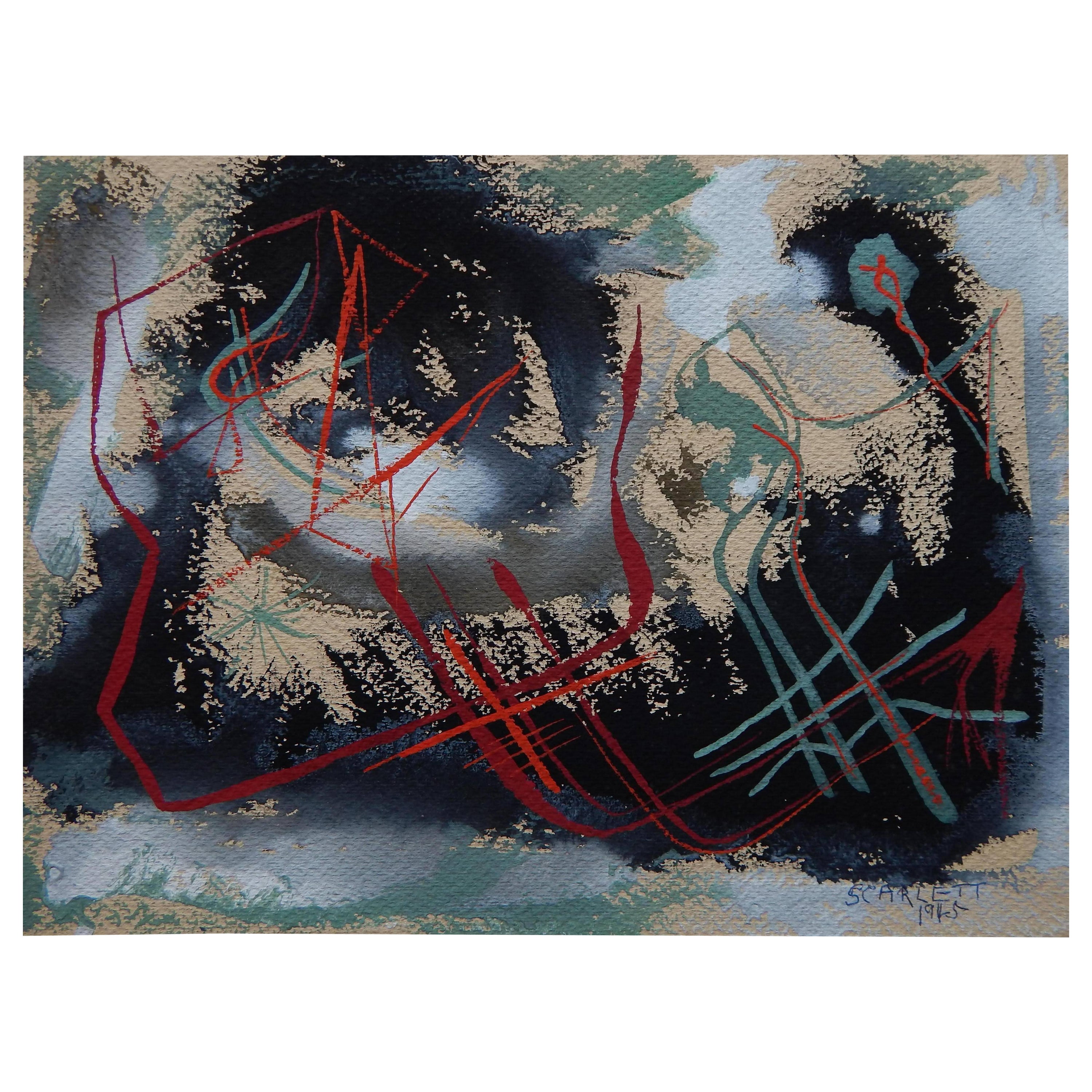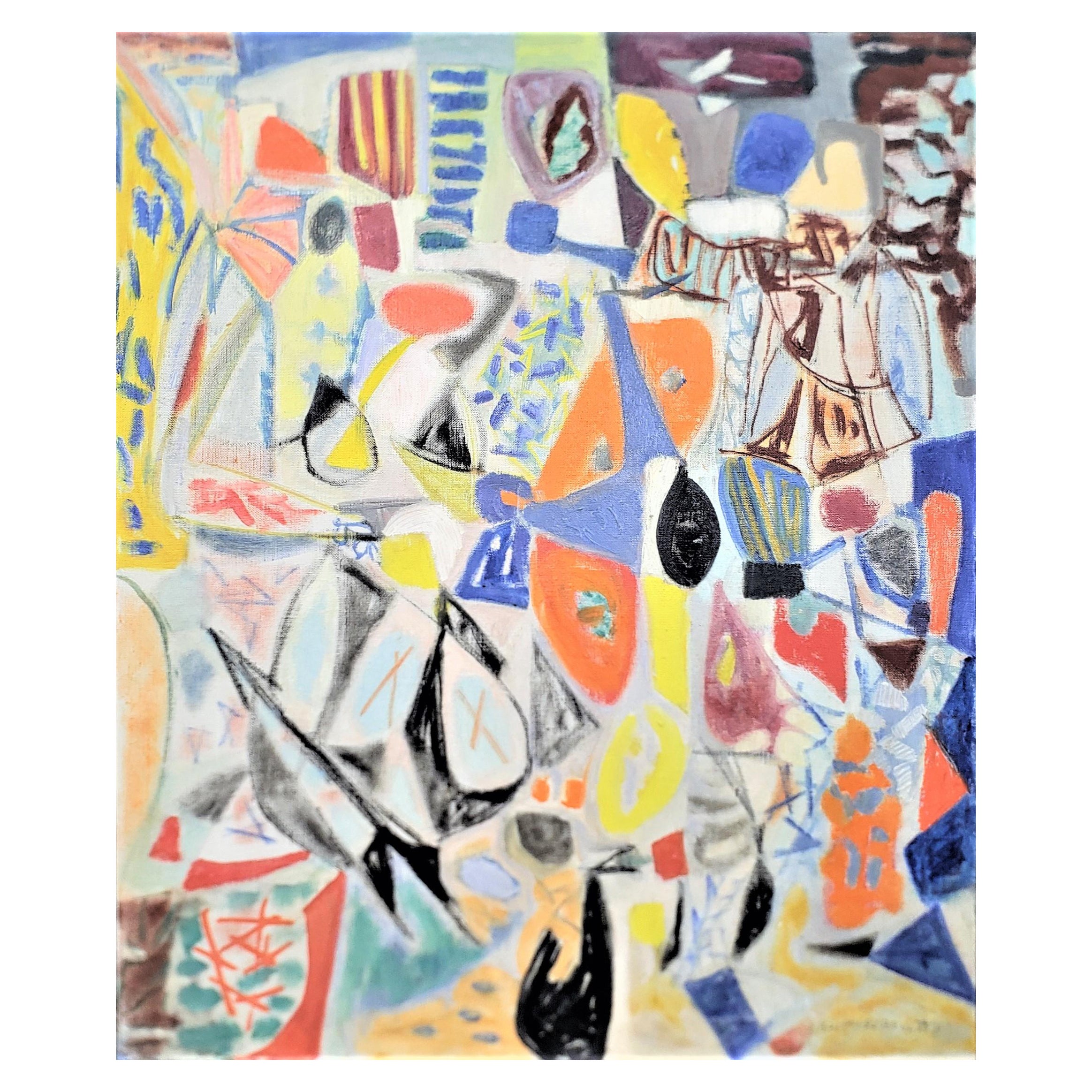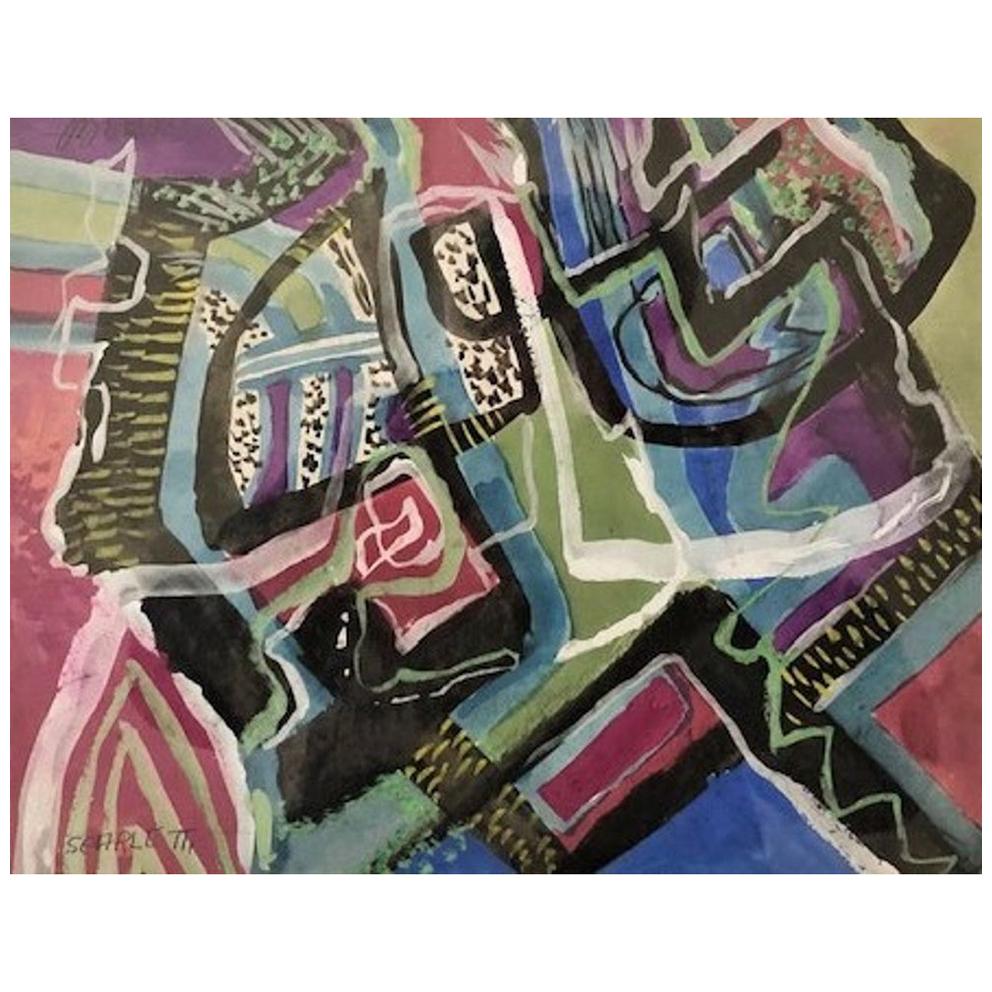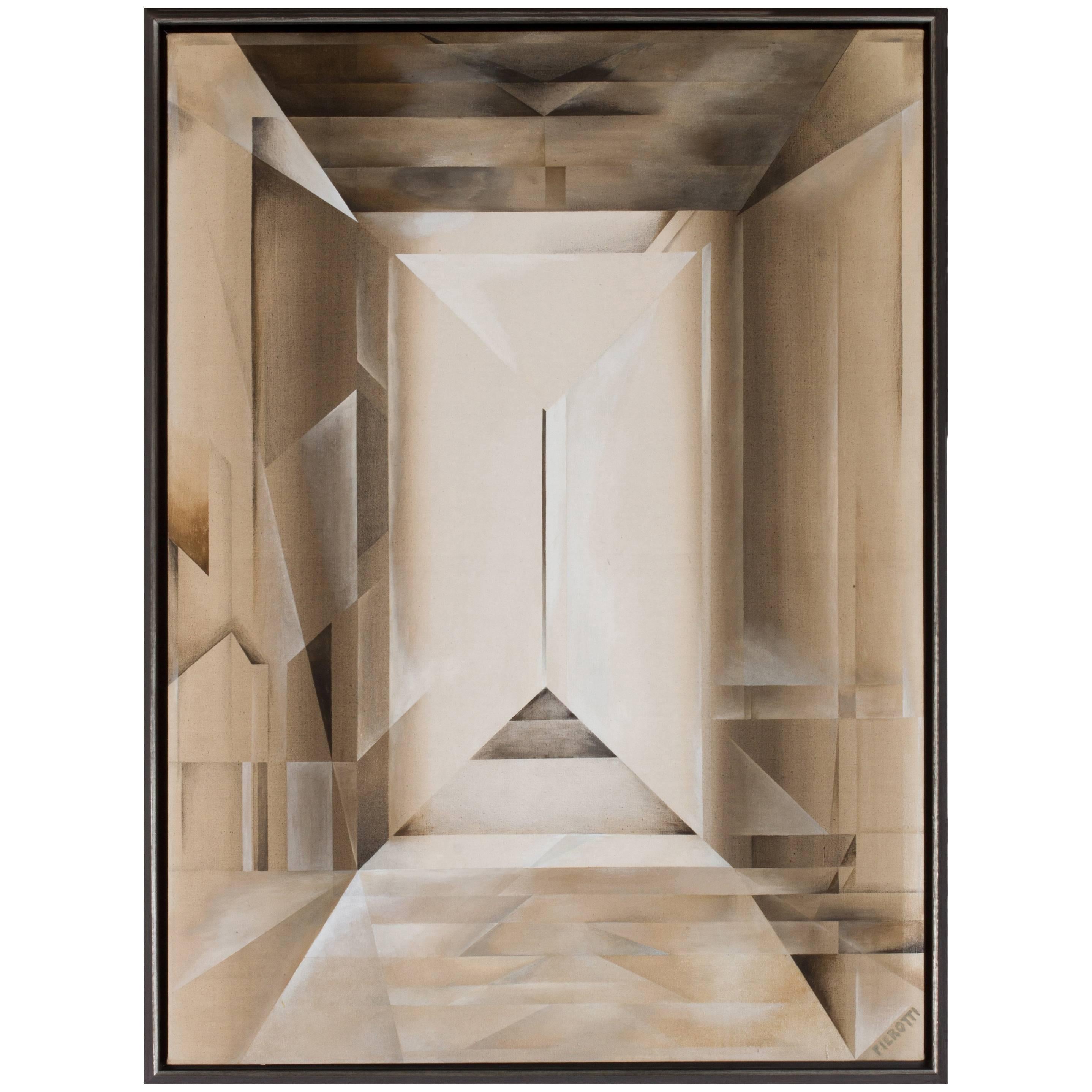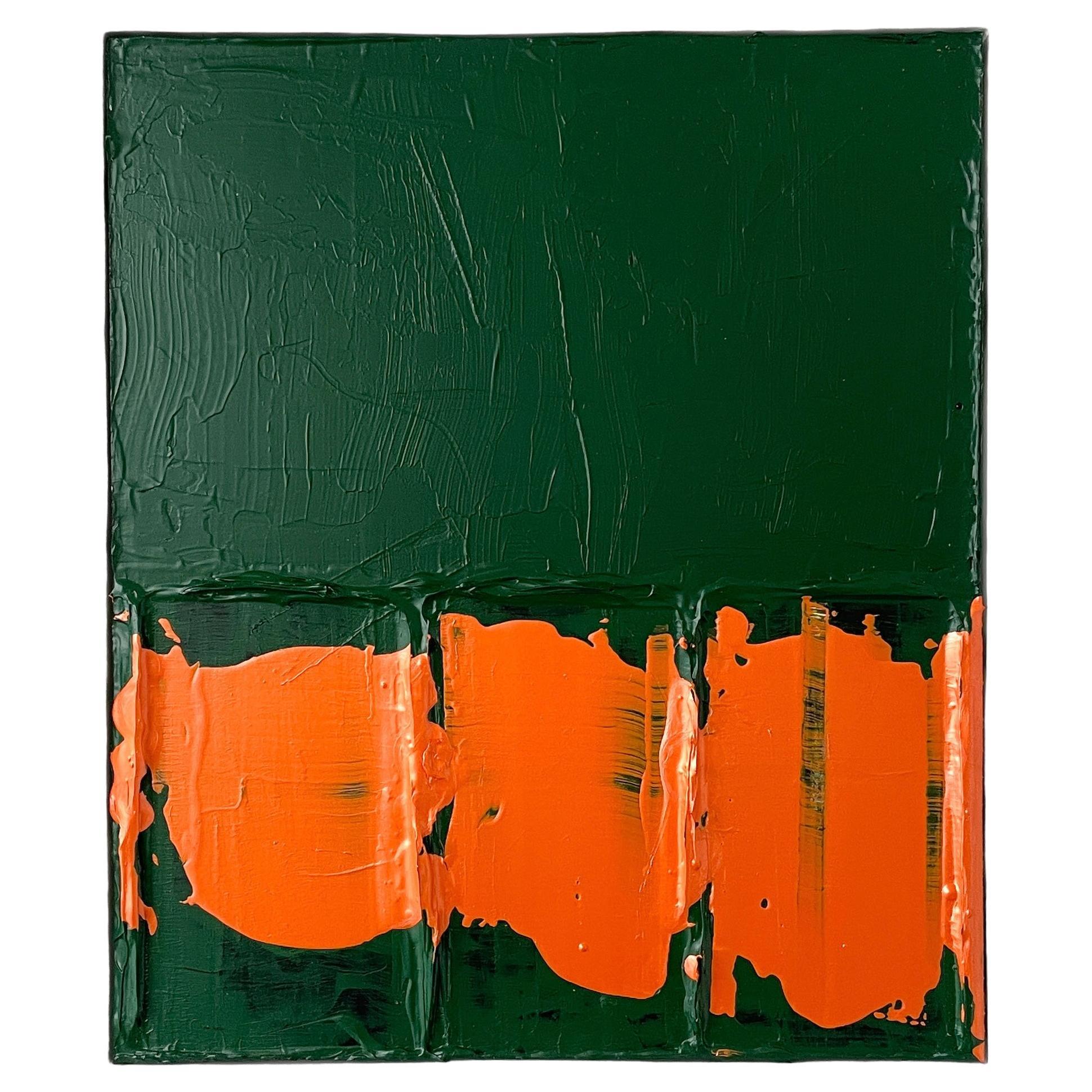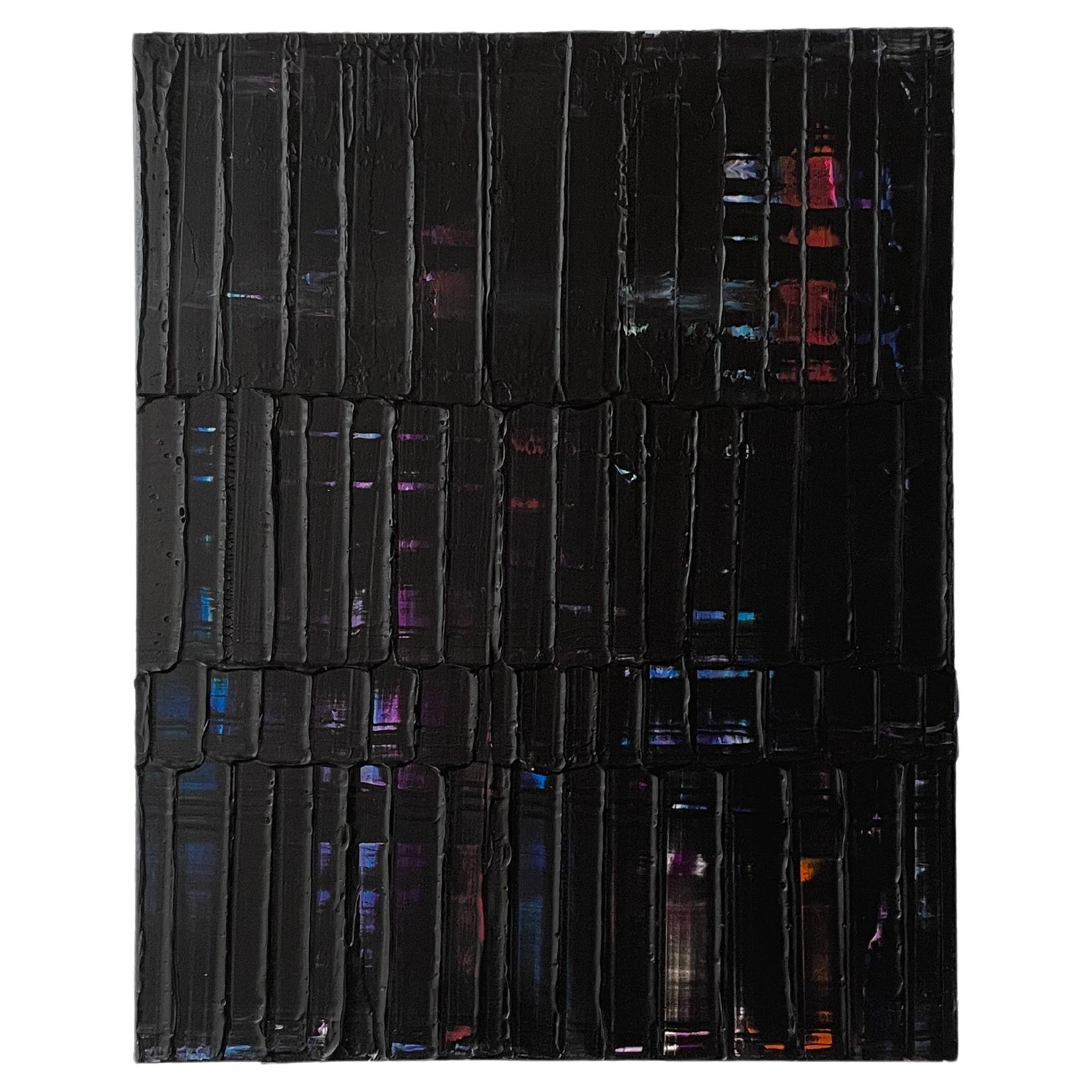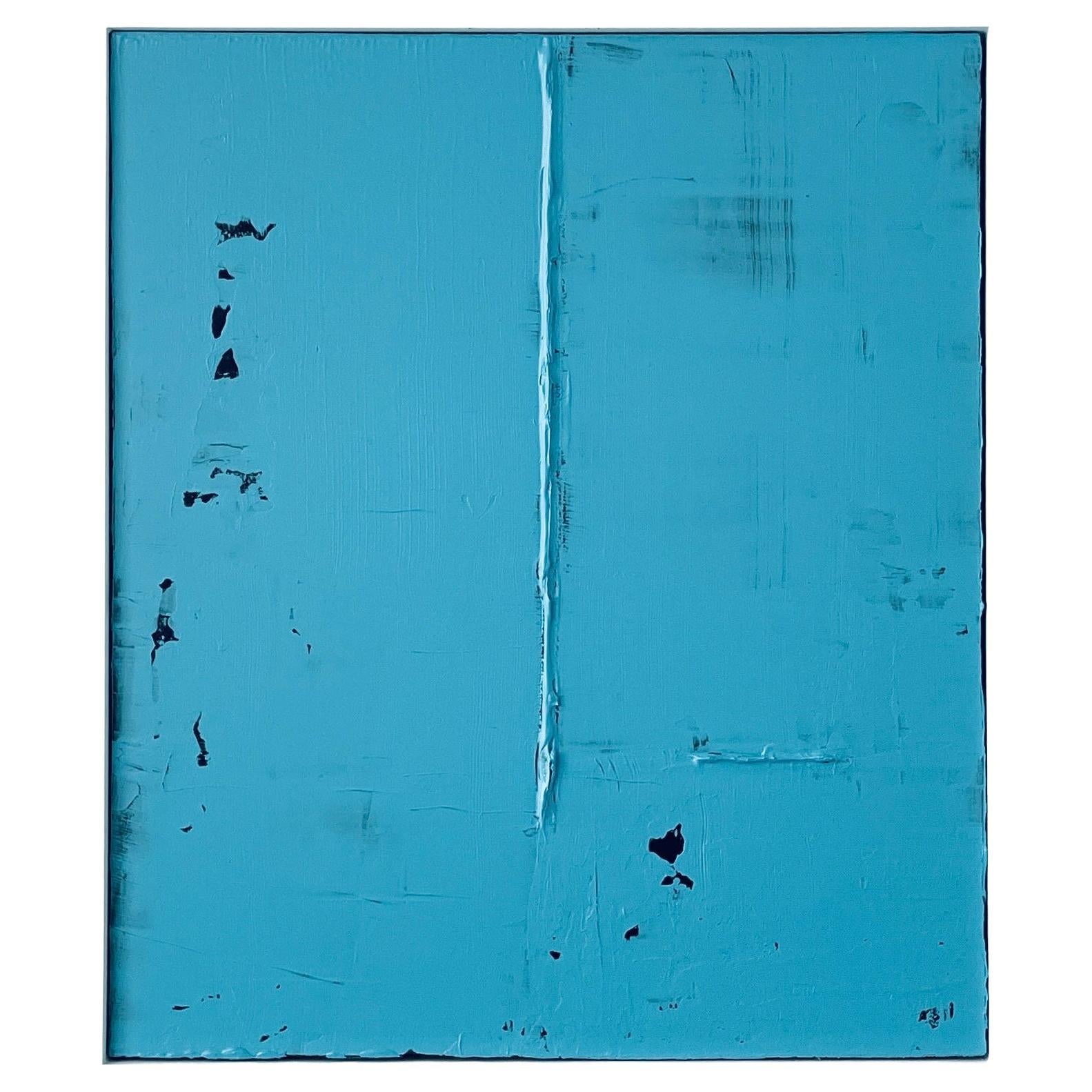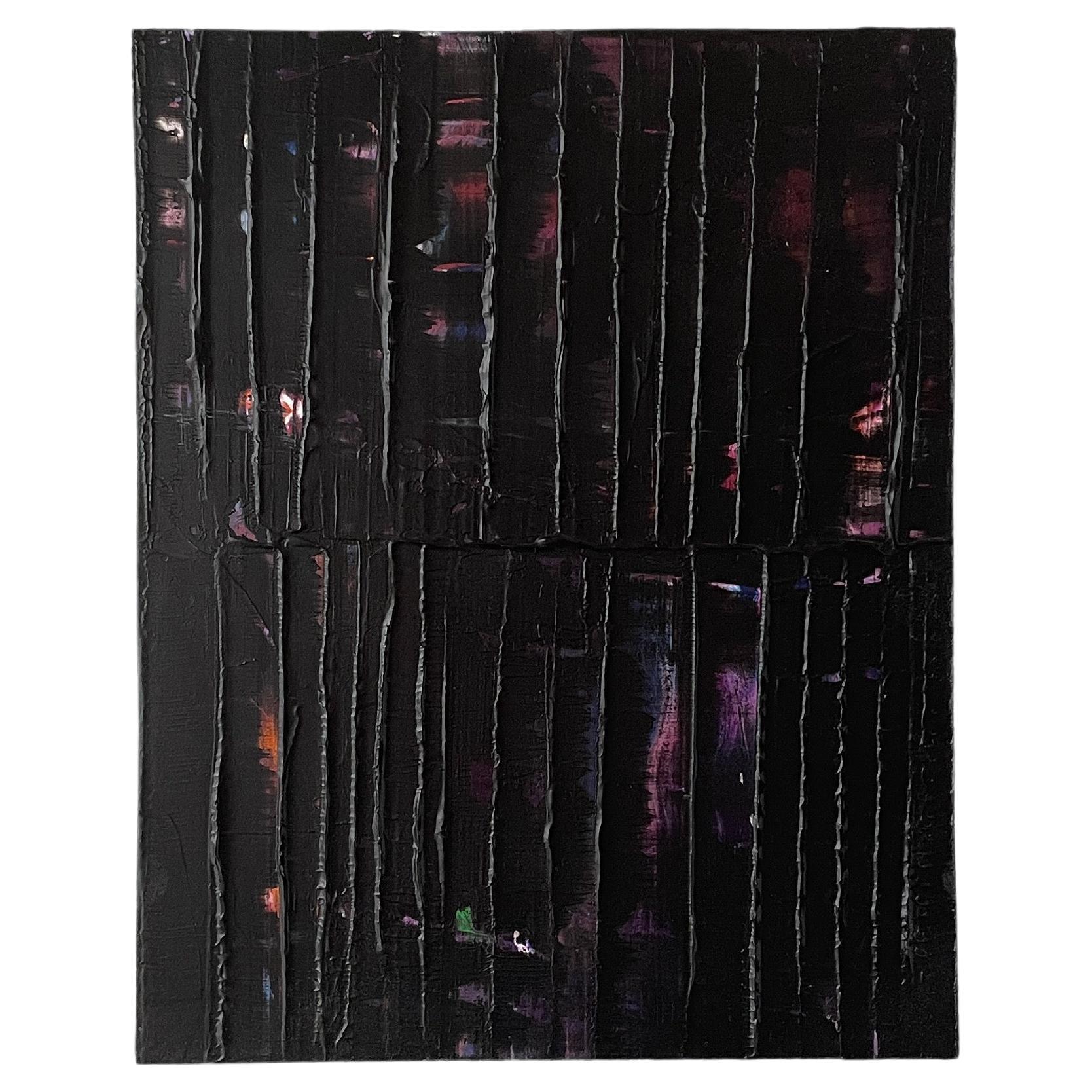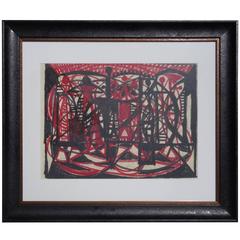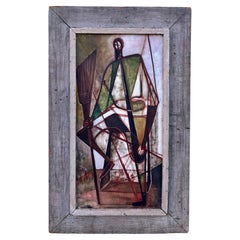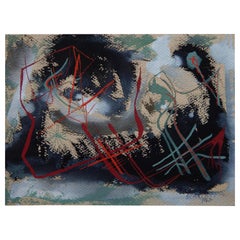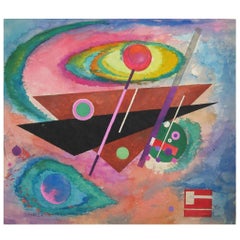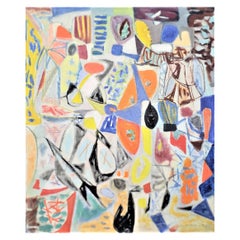
"Untitled Geometric Abstract" Painting by Rolph Scarlett
View Similar Items
Want more images or videos?
Request additional images or videos from the seller
1 of 3
"Untitled Geometric Abstract" Painting by Rolph Scarlett
About the Item
- Creator:Rolph Scarlett (Artist)
- Dimensions:Height: 15.5 in (39.37 cm)Width: 19 in (48.26 cm)
- Style:Mid-Century Modern (Of the Period)
- Place of Origin:
- Period:
- Date of Manufacture:1950
- Condition:dimensions are framed.
- Seller Location:Wiscasset, ME
- Reference Number:1stDibs: LU101761578442
About the Seller
5.0
Vetted Seller
These experienced sellers undergo a comprehensive evaluation by our team of in-house experts.
Established in 1998
1stDibs seller since 2013
199 sales on 1stDibs
More From This SellerView All
- "Untitled Abstract" Painting by Robert George GilbergBy Robert GilbergLocated in Wiscasset, MEMixed-media on paper 32" x 27" framed, circa 1960. Listed California artist, exhibited at the San Francisco Museum of Art.Category
Vintage 1960s American Paintings
$2,200 Sale Price50% Off - Abstract Gouache Painting by Hércules BarsottiLocated in Wiscasset, ME"Sem Titulo" gouache on paper. Illustrated Barsotti book page 146 Hércules Rubens Barsotti (born July 20, 1914 – December 21, 2010) was a Brazilian painter, graphic designer, s...Category
Vintage 1970s Brazilian Modern Paintings
- Mid-Century Cubist Figure Painting by Louise PershingBy Louise PershingLocated in Wiscasset, MEMid-century cubist oil on masonite signed in the lower right. Presented in what is most likely its original frame and presents well. Original label from Contemporary Arts on E 57th in NYC on stretcher. This painting probably dates from the 1940s. Louise Pershing (May 24, 1904- October 14, 1986) was an American painter and sculptor, and a founder of the Pittsburgh Center for the Arts. Pershing exhibited extensively, beginning in 1927 with the Associated Artists of Pittsburgh. One of her paintings, "Seedlings," was included in the 1937 Carnegie International...Category
Mid-20th Century American Mid-Century Modern Paintings
MaterialsPaint
- Modernist Landscape Painting by Nikolai TimkovBy Nikolai TimkovLocated in Wiscasset, MEOil on board, signed and dated 38' in lower right. Measures 6.75" x 15.5" including the frame, also inscribed and signed on reverse. Nikolai Timkov is one of the best known Russi...Category
Vintage 1930s Russian Modern Paintings
MaterialsPaint
- "Summer Pond" Painting by Tom PerkinsonBy Tom PerkinsonLocated in Wiscasset, MEOil on board. Tom Perkinson was born in Indianapolis, Indiana in 1940. He was raised in the country and developed a love for the natural landscape. He discovered that he had a talent for art while in elementary school. Art quickly became his chosen passion. During high school he studied at John Herron Institute of Art in Indianapolis. After high school, he studied at the Chicago Academy of Art. He left Indiana to pursue an undergraduate degree in Oklahoma. Each year while attending the university, he was invited to stage an annual exhibit of his work. His early work focused on the landscape, but also included still lifes and city scenes. At that time, his favorite artists were the early American painters...Category
Vintage 1980s American Paintings
$1,700 Sale Price55% Off - "Orange Sky" Painting by Tom PerkinsonBy Tom PerkinsonLocated in Wiscasset, MEWatercolor dated 1977. Tom Perkinson was born in Indianapolis, Indiana in 1940. He was raised in the country and developed a love for the natural landscape. He discovered that he had a talent for art while in elementary school. Art quickly became his chosen passion. During high school he studied at John Herron Institute of Art in Indianapolis. After high school, he studied at the Chicago Academy of Art. He left Indiana to pursue an undergraduate degree in Oklahoma. Each year while attending the university, he was invited to stage an annual exhibit of his work. His early work focused on the landscape, but also included still lifes and city scenes. At that time, his favorite artists were the early American painters...Category
Vintage 1970s American Paintings
$2,500 Sale Price40% Off
You May Also Like
- Rolph Scarlett Abstract Expressionist Painting, 1945By Rolph ScarlettLocated in Phoenix, AZAbstract expressionist gouache and watercolor on paper by noted artist Rolph Scarlett - Signed and dated lower right. Archivally matted, unframed. Image size: 11" H x 15" W. In excellent condition. Rolph Scarlett was a painter of geometric abstraction during the American avant-garde movement of the 1930s and 1940s. Born in Guelph, Ontario, Canada in 1889, he left Canada at the age of 18 to go to New York City and returned to Canada during the years of World War I. However, by 1924 he had established New York City as his home. While he was beginning his career as an abstract painter, he was designing stage scenery for George Bernard Shaw...Category
Vintage 1940s American Mid-Century Modern Paintings
MaterialsPaper
- Rolph Scarlett Original Watercolor Dated 1952, Geometric AbstractionBy Rolph ScarlettLocated in Phoenix, AZAbstract watercolor by Rolph Scarlett, signed lower left. A great example by Scarlett. Measures: 19" H x 21" W image size. New modernist custom-made frame. Size: 24 1/4" H x 26 3/4" W. Rolph Scarlett was a painter of geometric abstraction during the American avant-garde movement of the 1930s and 1940s. Born in Guelph, Ontario, Canada in 1889, he left Canada at the age of 18 to go to New York City and returned to Canada during the years of World War I. However, by 1924 he had established New York City as his home. While he was beginning his career as an abstract painter, he was designing stage scenery for George Bernard Shaw...Category
Mid-20th Century American Mid-Century Modern Paintings
MaterialsPaper
- Rolph Scarlett Original Non-Objective Modernist Oil Painting on Canvas: UntitledBy Rolph ScarlettLocated in Hamilton, OntarioThis original painting was done by the well known Canadian-American Rolph Scarlett, dating to approximately 1950 and done in his Non-Objective Modern style. This abstract painting is...Category
Mid-20th Century Canadian Mid-Century Modern Paintings
MaterialsCanvas, Pine
- Rolph Scarlett, Modernist Abstract Composition, Guache on Paper, Ca. 1950’sBy Rolph ScarlettLocated in New York, NYArtist: Rolph Scarletti (Canadian, 1889 – 1984) Object: Modernist Abstract Composition Period: Ca. 1950’s Medium: Guache on paper, framed Dimensions (unframed): Height: 9-1/3” Width: 12” Dimensions (framed): Height: 22-3/4”” Width: 25-3/4” Rolph Scarlett (Canadian, 1889 – 1984) was a consummate explorer of twentieth-century abstract painting. Never afraid of trying new styles, curious and opinionated, constantly engaged with the world around him while steadfastly aware that he was on his own path and his alone, Scarlett more than once proved to be at the artistic zeitgeist of the eras in which he lived. Exposed very early on to the work of Paul Klee through a chance meeting in Europe with the artist himself, Scarlett took up abstraction with a fervor that never diminished during his long and impressive career. To create something that had never existed before: this was Scarlett’s great cause. And that is what is most obvious when you look at Scarlett’s work—you have never seen anything quite like it. Scarlett was Canadian-born, came of age in the Midwest, and spent few important years in Hollywood, where he designed stage sets. His work from this early period echoes Klee’s use of color, his confidence in naïve, primitive forms, and his blend of abstraction and figuration. In its flat spatial qualities it prefigures the Indian Space painting of the 1940s by a decade. He moved to New York in 1933 and eventually found his first great patron at the Museum of Non-Objective Painting, directed by Baroness Hilla Rebay and art patron Solomon R. Guggenheim. Guggenheim would collect over 60 works by Scarlett for his collection, more than any other artist outside of Vasily Kandinsky and Rudolf Bauer. As a frequent exhibitor and lecturer at the Museum of Non-Objective Painting (MNOP), Scarlett honed his sensitive feel for bodies in space and capitalized on his trademark use of bright, vivacious colors into accomplished, perfectly harmonized geometric works. However, Scarlett soon morphed these hard-edged forms into a nuanced expressionistic abstraction which, at its best, seems to be populated by dancing forms that animate the canvases. Along this way he was advised by Rudolf Bauer, the German expatriate and one of the originators of non-objective painting in the teens. Bauer had the idea for the Museum, and Rebay, his champion, had found in Solomon Guggenheim a patron for manifesting it. When Bauer emigrated just before World War II, he wanted to meet Scarlett. The two became friends, and Bauer advised Scarlett on his work over the course of many years. Even in a 1979 interview, Scarlett began to tear up as he recalled his first meeting with Bauer, a man whose work he "worshipped," describing that, "It was a touching moment for me, I’ll tell you." Scarlett and Rebay also had a close, important relationship, one in which he bore the brunt of her sometimes condescending, if motherly, critiques and admonitions with tolerance and gratefulness. Eventually, though, he had to push back. In a letter from 1951 he writes, "I have noticed with growing amazement that during the past three years you have accepted less and less of my work—and, that same work, which you rejected has been accepted and shown in the best and largest shows all over this country." This period—the late 1940s to the early 1950s—did in fact correspond to Scarlett’s most critical success, and to a return to the fanciful forms and characters of his pre-war work. At the same time, he found his own rhythm and complexity using a drip style similar to, though denser and more opaque than, the one made famous by Jackson Pollock, who had worked for many years at the MNOP and with whom he shared common influences. In 1949 he had a very well received solo show in 1949 at the Jacques Seligmann Gallery, reviewed very favorably in The New York Times: "The impression made by these paintings is one of originality and strength." He was also included in a juried show "American Painting Today" at the Metropolitan Museum of Art in 1950 and in the Whitney Annual of 1951. The curator for the Whitney show in fact bypassed a selection of Scarlett’s careful geometrics in favor of a new "lyrical" drip painting—one which he describes as having had "a helluva good time" making. Rebay articulated her loss of control over Scarlett very keenly in one of her last official letters to him: "So your way ended in the horrid jungle it is in now; even a Mr. Pollock’s smearage was not bad enough for you to have a try at; and betraying yourself, you betrayed art and my faith in you, and my present disgrace by my failure to foresee such an outrageous possibility—since you even paint objectively now." Yet, despite the fact that he was moving in his own direction when the change in leadership took place at the Museum of Non-Objective Painting and Rebay was forced out as director, Scarlett was hit hard. He understood this change rightly as a betrayal by the establishment. Scarlett was a unique individual and soul, and was affected personally and philosophically by the idea that the movement with which Scarlett had aligned his talents seemed to disappear overnight, and his life’s work rendered valueless. Without the Museum’s support, Scarlett decided eventually to move to the artists’ community of Shady, New York, just outside of Woodstock. He had occasional shows throughout the years, but mostly settled down to regional obscurity. He began making jewelry, which had been his first trade, and it was following a show of his jewelry in 1975 at the Jaro Gallery, that he was rediscovered by Samuel Esses, and his wife Sandy. Samuel Esses was a successful businessman and an avid collector. He always sought out that which was unusual and, like Scarlett, was ahead of his time in many ways. For example, in 1979, Sam became enthralled with the early graffiti appearing on the New York subway trains. With the sole goal of preserving these groundbreaking yet short lived works of art he was inspired to create "The Esses Studio," a painting warehouse and workshop for graffiti artists to work in a studio, collaborate, and paint on canvas. The biggest names of graffiti writing participated—Futura, Crash, Dondi, Zephyr, and Daze to name a few. The project was well received and provided critical validation at an important time for this alternative form of abstraction to be recognized by the established art world. The success of the "Esses Studio" helped fuel an alternative fire that would propel gallerists and curators to acknowledge other street artists and provide a foundation of acceptance for the early careers of Keith Haring and Jean-Michel Basquiat. It is not a stretch to say that what Esses saw in the graffiti art of the 1970s was very similar to what he saw in 1950s-era Scarletts—something raw, honest, and melding many twentieth century influences into one unique form. Inspired by the importance of the collection and the passion of the collector, Weinstein Gallery...Category
Vintage 1950s Canadian Mid-Century Modern Paintings
MaterialsPaper
- Geometric Abstract PaintingLocated in London, GBThis colourful painting is of an abstract village scene in the geometric style. The elegant 'tray' frame keeps the focus on the picture itself. Si...Category
Vintage 1950s French Mid-Century Modern Paintings
MaterialsCanvas, Paint
- Geometric Abstract Painting by PierottiBy PierottiLocated in Pasadena, CAMonumental scale abstract painting by Pierotti, acrylic on canvas, 1980s. Geometric shapes make up the overall design of the piece with shadows creating a three-dimensional quality. ...Category
Vintage 1980s Paintings
MaterialsCanvas, Acrylic
